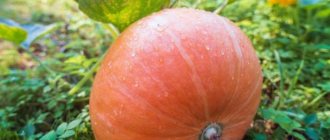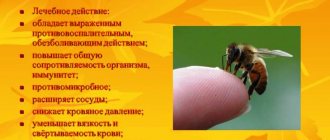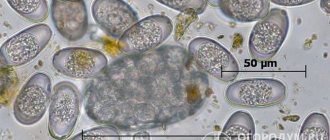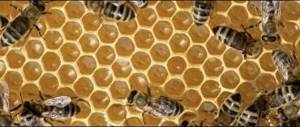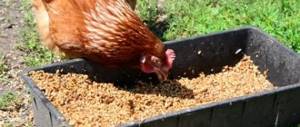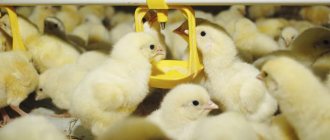What is a honeycomb?
Honeycomb is a natural product created by bees to store honey and bee pollen or to house their larvae.
It consists of a series of hexagonal cells built from beeswax, which usually contain raw honey.
Raw honey differs from commercial honey in that it is not pasteurized or filtered.
Honeycombs may also contain bee pollen, propolis and royal jelly, additional bee products with potential health benefits. However, they can only be found in small quantities (, ).
You can eat the entire honey comb, including the honey and the surrounding wax cells.
Raw honey has a more textured consistency than filtered honey. Additionally, the wax cells can be chewed like chewing gum.
Summary:
Honeycomb is a natural product created by bees to store larvae, honey and pollen. The entire honeycomb can be eaten, including the wax cells and the raw honey they contain.
How to eat honey in honeycombs, what will happen if you eat honeycombs
Natural honeycombs are difficult to find even from trusted beekeepers. Most often, beekeepers sell this product in small quantities by weight; they can look like a small bar or a whole piece. If you managed to find high-quality bee honeycombs, you will definitely be wondering whether it is possible to eat not only the honey that is sealed in them, but also the waxy part itself.
The famous ancient doctor Avicenna, in his time, describing how to use honey from honeycombs, recommended swallowing small pieces of wax honeycomb. In particular, in this way, in his opinion, it was possible to cure stomach ulcers.
Extracting comb honey on your own without damaging the fragile hexagonal structure and maximizing all the benefits of a unique product is an almost impossible task. It is better to immediately entrust the matter to a professional, experienced beekeeper. It is especially important that when separating the honey product from the wax cells themselves, a layer of pollen, beebread and propolis does not remain at their bottom.
The most convenient and optimal option is to include honey sealed in honeycombs in your diet. It can be bitten into small pieces and chewed, cut into small pieces and consumed throughout the day, and can be used as chewing gum due to its ability to cleanse tooth enamel, gums and the oral cavity in general.
By following the advice of beekeepers with many years of experience, you can understand the optimal scheme for consuming honey in wax cells. First you need to find and choose a high-quality, and most importantly, natural product. Then arm yourself with a sharp knife and divide the useful bee product into pieces measuring 3 by 3 cm.
People have known for a long time how useful cellular honey is. Even the ancient Egyptians noticed that honey in honeycombs, having absolute sterility and a unique composition, is stored longer and does not crystallize.
Chew one such piece until the characteristic honey taste disappears (about 7-10 minutes). The waxy component that remains in the mouth, after the specified time, can be further dissolved, you can continue to chew and “extract” the remains of useful substances, or simply swallow.
Proper intake of comb honey includes compliance with the following rules:
- Do not overuse the amount of wax you eat. Strictly adhere to the recommended dosage. It provides up to 150 g per day for an adult and up to 45 g per day for a child. This volume of honey-wax product is enough to replenish the body’s reserves of useful substances, microelements and vitamins and not begin to gain weight;
- If you suffer from sleep disorders, particularly insomnia, try a simple, effective remedy. An hour before bedtime, drink a glass of warm milk, after dissolving 2 tablespoons of honey in it. Also, this remedy will help get rid of stress, relieve tension after a hard, busy day;
Pure honey product is located inside honeycomb wax cells in a preserved state and is, in a way, a repository of vital vitamins, microelements and valuable enzymes. It is necessary, first of all, in winter for striped workers to feed and feed the bee offspring.
- to increase the body's defenses, eat 50 g of comb honey on an empty stomach every day;
- By regularly consuming honey in wax cells before meals in the morning, you will charge yourself with energy for the whole day, feel a surge of strength and a charge of vigor.
What happens if you eat honey nectar along with wax? Beeswax is a natural sorbent of natural origin, which can deservedly be called a product that works on a par with activated carbon. It does an excellent job of cleansing the body of harmful substances and accumulated toxins.
If you give a child honeycomb to chew, be sure to be nearby and carefully watch so that he does not choke or swallow it.
By consuming comb honey as a delicacy, we receive the required quantities of carbohydrates (vital energy), unsaturated acids, amino acids (building material for the body) and a whole set of microelements.
When purchasing honeycombs with uncut ribs, do not rush to get rid of them and send them to scrap. It can also be chewed, since it contains useful substances in higher concentrations than in honeycombs and the honey nectar sealed in them.
For adults
Regular consumption of a small amount of honey in the cells is beneficial for both women and men. Let's take a closer look at how and who should use the bee product.
For men
The combination of honey, pollen, and propolis adds even greater value to the product, which fills our body with natural antibiotics and natural vitamins, cleanses it of waste and toxins.
Cell honey will help you get better if you have the following problems:
- weakness, general malaise, loss of strength and apathy;
- prostate disease;
- sleep disturbance;
- weakening of the immune system;
- problems with potency (remember that it is directly related to nutrition and lifestyle)
- smoking (chewing honeycombs is a very suitable substitute for smoking).
To restore male strength, every day eat a mixture made from liquid natural honey with finely chopped walnuts.
Women
Wax honey cells contain all the components necessary to combat such female ailments:
- erosive processes of the cervix;
- diseases of the pelvic organs;
- cystitis;
- jumps in blood pressure;
- insomnia, chronic fatigue, headaches, weakness, lethargy;
Honey in combs is not only an extremely aromatic and tasty delicacy. It is often used to treat various ailments in alternative medicine, thanks to the accumulated experience of healers and healers who have studied this product for centuries and applied the acquired knowledge in practice.
- infertility of unknown etiology;
- disruptions in the functioning of the heart muscle, problems with blood vessels;
- kidney and liver diseases.
The content of vitamins and medicinal substances in the composition of comb honey will allow the expectant mother to replenish the body's reserves with all the necessary elements necessary to maintain the strength and full development of the child.
For children
This type of product, created by bees, can even be given to children (preferably over 3 years old). Honeycombs with honey can be used for:
- increasing the defenses of a fragile organism. This is especially true in the off-season, when infections stick to young children;
- strengthening the bone skeleton and muscles;
- prevention and treatment of vitamin deficiency, anemia and diseases of the oral cavity (wax cleans teeth and gums of plaque, reduces the risk of carious cavities and tooth decay);
Wax honeycombs help fight many diseases. In combination with medications, honey in combs helps to more effectively defeat the disease and recover faster from a cold.
- cellular honey can also be used to normalize the functioning of the central nervous system;
- stimulating a good appetite (make sure that the child does not accidentally swallow a large piece of wax);
- maintaining the body and the entire organism during physical and mental stress.
Rich in Certain Nutrients
Honeycombs are rich in carbohydrates and antioxidants. They also contain trace amounts of some other nutrients.
Their main component is raw honey, which contains small amounts of protein, vitamins and minerals, but is 95-99% sugar and water (,).
Because raw honey has not been processed, it contains enzymes such as glucose oxidase, which give it antimicrobial and antibacterial properties.
Such enzymes are destroyed by the heat and filtration used to process most commercial honeys ().
In addition, raw honey is less likely to be contaminated with sweeteners such as high fructose corn syrup and also contains more antioxidants than processed honey (, , ).
Antioxidants are beneficial plant compounds that promote health, reduce inflammation, and protect your body from disease. Their levels can be 4.3 times higher in raw honey compared to processed honey (, , , ).
Polyphenols are the main antioxidant in honey. Research shows they may help reduce the risk of diabetes, dementia, heart disease and even some types of cancer ().
Honeycomb also contains beeswax, which contains heart-healthy long-chain fatty acids and alcohols. These compounds may help lower cholesterol levels (,).
Summary:
Raw honey and beeswax are the two main components of honeycomb. Raw honey is rich in enzymes and antioxidants, and beeswax contains long-chain fatty acids and alcohols, all of which can help you feel better.
May Promote Heart Health
Honeycomb may improve your heart health.
Research shows that the fatty acids and long-chain alcohols found in beeswax may reduce high blood cholesterol, which is a risk factor for heart disease.
For example, one review notes that beeswax alcohols can help reduce “bad” LDL cholesterol levels by 29%, and increase “good” HDL cholesterol levels by 8-15% ().
However, the studies in this review used high levels of isolated beeswax-derived alcohols, making it difficult to determine whether small amounts of beeswax in honeycomb will produce the same effects.
However, honey itself may have the same cholesterol-lowering ability (, , , ).
In one small study, participants consumed 70 grams of sugar or honey per day. After 30 days, those in the honey group increased their “good” HDL cholesterol levels by 3.3% and decreased their “bad” LDL cholesterol levels by 5.8% ().
What's more, replacing sugar with honey can also help reduce triglyceride levels by 19% (, , , , ).
Additionally, the antioxidants present in honey can help dilate the arteries leading to your heart. In turn, this can improve blood flow and lower blood pressure, potentially reducing the risk of blood clots, heart attack and stroke (,).
Summary:
Honeycomb may benefit your heart by improving circulation and increasing levels of “good” HDL cholesterol while lowering blood pressure, triglyceride levels, and “bad” LDL cholesterol.
Honeycombs: benefits and harms, how to extract and eat correctly
Honey in combs consists of cells made of beeswax of the same shape and size. Insects use them to store pollen, nectar, beebread, and other substances. Honeycomb is more saturated with useful components than a pure product, therefore it is widely used in cosmetology and medicine.
Description and distinctive features
Cell honey is considered a natural source of bee products, since it is not subject to any third-party influences (distillation, pressing).
It contains the following components: nectar, wax (used by bees to build cells), royal jelly, bee bread, pollen. Together, these elements exhibit maximum beneficial properties.
- The consistency of the bee product is liquid, slightly viscous;
- smell, taste - strong, honey-like, with a sweetish aroma, vary depending on the type of honey plant;
- the color of the cells is from light yellow to white, can be golden or brownish;
- appearance - the honeycombs are covered on top with a lining (wax plates, signet), which indicates full maturation;
- the sugaring process is lengthy due to the high content of propolis, which exhibits preservative properties;
- Storage stability is good, honey remains fresh and aromatic for a long time.
Distinctive qualities indicate the preservation of natural healing properties, taste, aroma, which maximizes the natural properties of the product. Comb honey shows the hard work of bees.
Composition and calorie content
Honeycombs with honey are filled with various components resulting from the activity of insects:
- propolis – content is about 10%, the main healing properties used by humans are the elimination of the inflammatory reaction, a detrimental effect on bacteria and fungi;
- wax – occupies up to 50% of the component composition, when sealed into cells it remains clean;
- bee bread is the bottom layer in honeycombs, obtained by pressing pollen by insects. One cell contains up to 150 mg of flower grains. The top of the bee bread is covered with honey product.
These components determined the richness of the chemical composition, which is represented by the following components:
- Carbohydrates (fruit sugar, glucose) – from 75 to 82%. Pure sugars – up to 0.1%.
- Proteins – up to 5%, which is considered a high indicator for a bee product.
- Amino acids, enzymes, organic and fatty acids.
- Vitamins – thiamine, riboflavin, pyridoxine, folic, ascorbic, pantothenic, nicotinic acids.
- Microelements – fluorine, zinc, manganese, iodine, iron, copper.
- Micronutrients – potassium, magnesium, sodium, calcium.
It was noted that the beneficial substances of honeycomb nectar are presented in greater quantities than those of the pumped honey product. This makes it more acceptable for medicinal purposes, which is confirmed by the recommendations of doctors.
Honey sold in honeycombs has an average calorie content - 324–327 kilocalories (1340 kilojoules) per 100 grams. This is 16% of the average daily value.
The benefits of honey in combs
Due to its numerous and varied composition, honeycomb nectar exhibits the following preventive and medicinal properties:
- Replenishment of energy reserves. During intense mental and physical stress, after surgery or a serious illness, drinking bee nectar will restore strength and restore tone. This occurs due to the complete absorption of nutrients (carbohydrates, proteins), vitamins, and minerals.
- Oral protection. The main properties are inhibition of inflammatory processes on the mucous membrane; healing of minor wounds; strengthening gums and tooth enamel; cleaning from plaque; prevention of the development of tartar and caries.
- The healing properties of propolis. Bee glue exhibits wound-healing, anti-inflammatory, and antibacterial properties. They are used for diseases of various systems and organs.
- The benefits of cellular nectar directly. It is considered a natural antiseptic. Other beneficial properties include activation of metabolic processes, increased tone, and bactericidal properties. Honeycomb honey helps heal wounds or ulcers, cleanse waste and toxins, and improves blood composition.
- Rejuvenating, restorative effect. Used for healthy skin and hair. Useful components nourish cells, normalize the functioning of sebaceous glands and hair follicles, and moisturize the skin.
The healthfulness of the honey product is not limited to the listed properties, since each component is rich in its own beneficial qualities. Together, they exhibit a beneficial effect that significantly exceeds the usefulness of pure nectar.
For what diseases is it used?
The benefits of comb honey have determined its use in medicine. It helps with many diseases - from problems in the oral cavity to the treatment of skin lesions.
- Diseases of the oral cavity, including dental ones. Common ones are periodontal disease, caries, stomatitis, tonsillitis, gingivitis. Honeycombs help fight plaque and tartar deposits.
- Decrease in the body's defenses. This happens for various reasons: a recent illness, injury or surgery; genetic predisposition; constant stress. Consuming cellular nectar will strengthen the immune system, it is especially useful for children, but in the absence of contraindications.
- Intoxication. It is caused by various factors. Wax, which makes up half of all substances, actively removes waste, toxins, and decay products from the body. It acts as an absorbent, a catalyst for recovery.
- Inflammation of the respiratory system. Honeycomb honey helps in the treatment and prevention of rhinitis, laryngitis, tracheitis, bronchitis, pneumonia, pleurisy. However, in these situations, bee nectar acts as an aid.
- Skin damage (wounds, injuries, burns, frostbite). This is determined by the ability to enhance the regeneration of cells and tissues. The effect is especially noticeable on wounds after operations that take a long time to heal.
- Disturbances in the functioning of the nervous system. Stress, emotional fatigue, insomnia, depression are problems that honey in combs successfully copes with. Regular consumption will also improve your mood and give you strength.
- Diseases of the heart and blood vessels. High glucose content improves the functioning of the heart muscle. Honeycomb nectar also increases blood supply to the organ, normalizes blood pressure, relieves headaches and dizziness. After a heart attack or stroke, it helps to recover faster.
The best qualities of black maple honey
- Disturbances in the functioning of the digestive organs. Nutrients reduce inflammation and help heal ulcers when they appear on the walls of the stomach and intestines. They have a positive effect on the functioning of the liver, gall bladder, and ducts.
- ARVI, cold. Cellular nectar is an effective remedy in the fight against viral, respiratory, and colds. The main role is given to prevention. It helps strengthen the immune system, which is especially important for children.
- Eye diseases. Honey in combs is a sterile product, so it is well suited for the treatment of eye pathologies. You just need to dilute the nectar with clean water and drip it. This will help with conjunctivitis and cataracts.
How to get honey from honeycombs at home
Sometimes it is necessary to get nectar from the honeycombs, this process is difficult. There are three common methods at home:
- Sieve. Remove the lining from the honeycomb block and place the cells on a sieve that covers the prepared container. After 5 hours, the nectar will gently drain.
- Honey extractor. The method is widespread among beekeepers. The device resembles a centrifuge. At increased pressure, the viscous liquid separates, but the cells remain.
- Pressing. A suitable device is a fruit juice squeezer.
However, it is recommended to eat sweet liquid along with honeycombs, then the beneficial substances will be preserved in maximum quantities.
How to eat honey in honeycombs
If a person has never encountered this product, he is interested in the main question: “How to use honey found in honeycombs?” The main method is chewing. A small block is cut from a block with cells, placed in the mouth and chewed like gum. At first the piece will be hard, but over time it will soften and lose its sweetness.
Whether it is possible to swallow wax that remains after chewing is an important question. Doctors do not prohibit it, but they advise not to abuse it. Wax does not dissolve in the stomach, so if it is eaten in large quantities, intestinal volvulus or obstruction may occur.
The rate of consumption of honeycomb nectar is for adults 100 grams per day (8 kg per year), for children – 40 grams. In this case, the entire amount is divided into 3 doses.
Production of comb honey
During production, beekeepers take into account 2 rules to obtain high quality honey:
- strength, health, productivity of the bee family;
- correct hive design to ensure abundant harvest.
Beekeepers carefully study honey plants, flowering times, weather conditions, and climate. These factors directly influence bribes. For example, in the fall it will be more susceptible to sugaring than in the summer.
For production, honeycomb frames covered with wax are used, where bees cultivate the cells and fill them with nectar. These devices are rectangular, usually made of wooden planks. Foundation is necessary for quickly setting up honeycombs. It is a wax sheet with pressed cells.
For sale, beekeepers cut the honeycomb blocks, so they lose their integrity, and the honey leaks out, which does not add any advantages to the presentation. Then it is recommended to use mini-frames, which will allow you to receive cellular honey in portions, without violating the integrity.
Contraindications
Honey in combs has many benefits, but if used incorrectly, it is harmful to health. Contraindications:
- diabetes;
- allergy or intolerance to components of beekeeping products;
- gallstones;
- gastritis, pancreatitis;
- the presence of cancerous tumors;
- children under 3 years old;
- heat.
If you are obese, have metabolic disorders, or have peptic ulcers, use with caution, only after consulting a doctor. This also applies to pregnancy, liver and kidney diseases.
Honey in combs is the leader among beekeeping products in terms of the content of nutrients and useful substances. This determined the breadth of its use for medicinal purposes.
May protect against infections
Honeycomb can enhance your body's ability to fight certain bacteria and fungi.
For example, test-tube studies show that beeswax extracts may provide protection against fungi and pathogenic bacteria, including Staphylococcus aureus, Candida albicans, Salmonella enterica, and Escherichia coli (, ,).
Honey is also known for its antimicrobial properties. Research shows that it may help protect the intestines from the intestinal parasite Giardia (giardia).
However, human studies are needed to confirm these effects.
Summary:
Honeycombs can strengthen your body's defenses against fungi and certain types of pathogenic bacteria. They may also help protect your intestines from certain parasites. However, more human studies are needed.
May reduce cough in children
Honeycomb may also help reduce coughing in children.
Children are susceptible to upper respiratory tract infections, which can cause coughing. Research shows that honey may help suppress this cough ().
In one study, drinking just 1/2 teaspoon (2.5 ml) of buckwheat honey 30 minutes before bedtime was more effective than cough syrup in reducing cough-related discomfort in children.
The group of children who received buckwheat honey also slept better than children who received cough syrup or nothing at all ().
Honeycomb likely has the same benefits since it contains honey.
However, honey contains botulinum bacterium spores, which can be harmful to infants. For this reason, honey or honeycomb should not be given to children under 12 months of age (,).
Summary:
Honeycombs are rich in honey, which can help reduce coughs in children. However, it should not be given to children under one year of age due to the risk of developing botulism.
The benefits and harms of honey in combs
Honey is a unique natural source of vitamins and microelements. Known for its healing properties, it is actively used in folk medicine and can fight many ailments. At the same time, those types of bee products that are not extracted from the honeycombs or subjected to outside interference have the greatest benefit.
Insects independently seal honey into honeycomb cells, thereby ensuring sterility and protection. Being in natural storage, honey does not lose its beneficial properties, but quite the opposite.
As for the honeycombs themselves, without exaggeration they can be called a true architectural masterpiece - all the cells have the shape of an ideal hexagon, of a strictly defined size. In addition to honey, they contain beebread, a substance that provides an antibacterial effect, and royal jelly, the raw material necessary for feeding offspring. While in a sealed state, comb honey retains most of the beneficial components of the flowers and plants from which the pollen was collected.
It is worth noting that honeycombs protect nectar, not only providing it with sterile storage conditions, but also delaying the processes of crystallization. In addition, being in wax cells, it is saturated with components of other beekeeping products, which only enhances the healing effect.
What is the main difference from regular honey?
Comb honey has not been subjected to any outside interference or influence - this is its key advantage, which distinguishes it from ordinary varieties. Due to being in a sealed state, the product is enriched with particles of propolis - an incredibly useful natural component with a pronounced antifungal and antimicrobial effect.
In addition, protection from external factors and irritants helps to increase the concentration of vitamins (in particular vitamins A and B) necessary for the normal functioning of the body.
Composition and calorie content
It is impossible to answer in detail the question of how honey in combs is useful without analyzing its composition. According to a number of studies aimed at finding out the chemical formula of the product, its composition is presented:
- carbohydrates dissolved in a small amount of water (fructose - 38%, glucose - 31%, sucrose - 1%, etc.);
- useful macro- and microelements (calcium, magnesium, iron, phosphorus, fluorine, potassium, sodium, etc.);
- proteins - approximately 0.3 grams per 100 grams of product;
- natural compounds (riboflavin, pantothenic acid, ascorbic acid, etc.);
- vitamin complexes of groups A, B, C, H, PP.
The benefits of honey in combs are due to the characteristics of the wax frames themselves in which it is stored. Thus, up to 10% of the total share is occupied by propolis, a substance known for its anti-inflammatory and healing properties. About 40% is wax, which ensures sterility and protection. Well, and, of course, it can’t do without beebread.
As for the calorie content of the product, there are 320-330 kcal per 100 grams (depending on the variety). Thus, one spoon contains no more than 10-15 calories.
Useful properties of honey in combs
Next, we propose to discuss in more detail the benefits and harms of honeycombs, listing their main properties. Among the most important and obvious are traditionally:
- immunomodulatory;
- anti-inflammatory;
- antifungal;
- antibacterial;
- healing.
All this makes honey an incredibly effective product in the treatment and prevention of seasonal flu and colds. In addition, according to a study conducted by the US National Institutes of Health, honey is effective in healing burns and wounds, as well as eliminating the negative manifestations of diabetes and mucositis.
What does it help with?
Having understood the beneficial properties, we suggest taking a closer look at specific indications for use. Honeycomb honey is especially useful for men . Acting as a natural aphrodisiac, devoid of harmful chemical and synthetic compounds, it has a beneficial effect on potency. To maintain male strength, it is enough to eat one spoon of honey with unroasted walnuts or pine nuts every day.
for women during pregnancy. Since the immune system of the unborn child begins to form during the prenatal period, it is important to provide the mother’s body with a sufficient supply of beneficial vitamins and microelements. Rich in folic and ascorbic acid, honey has a beneficial effect on women's health and helps avoid a number of pathologies and complications. However, pregnant women can take it only after preliminary consultation with a specialist and under his close supervision.
Children are allowed a delicious honey treat from the age of 3. Pediatricians especially recommend including it in the diet with the onset of autumn - this allows not only to prevent the development of viral flus and colds, but also to activate brain processes responsible for long-term memory, concentration, etc.
Below is a list of ailments that can be eliminated if you simply take cellular honey correctly:
- Intoxication of the body. Honey perfectly removes waste and toxins, and therefore at the first symptoms of poisoning it is not at all necessary to run to the pharmacy. You can take a tablespoon of honey instead.
- Oral diseases. Just massage your gums with honey several times a day and minor wounds and damage will stop bothering you.
- Respiratory tract diseases. Due to its emollient and anti-inflammatory effects, honey perfectly fights bronchitis, dry and wet cough.
- Fungal infections. Honey compresses will quickly and effectively eliminate all pathogenic activity.
- Ulcers and gastritis. Having a beneficial effect on the functioning of the stomach and intestines, honey can eliminate even such serious pathologies.
- Sore throats. If it hurts to swallow, just drink warm milk with honey (recipe here).
Well, of course, cellular honey is an excellent remedy for increasing the body’s protective functions and combating reduced immunity.
How to choose and store correctly
It is recommended to purchase comb honey only from reliable and trusted beekeepers, since there is a high risk of purchasing low-quality or counterfeit goods. As for optimal storage conditions, honey is usually kept in a cellar or basement at a temperature of 3-10 degrees. Among the key requirements for the premises:
- lack of direct sunlight;
- good ventilation;
- humidity level is not higher than 60%.
The standard shelf life under such conditions is up to six months.
Beneficial properties of milk thistle honey
If you do not have a cellar or basement, honeycombs filled with honey should be carefully cut and stored in the refrigerator. They can also be stored in this form for about 6 months. Next, we will tell you in detail how to properly eat honey in honeycombs with wax. You can read more on the topic here.
How to eat honey in honeycombs
How to use honey in combs? As a rule, frames are chewed, first absorbing a sweet, sticky substance. Then chew the remaining wax mass. After 3-4 minutes it is spat out.
How much can you eat per day
Experts strongly advise against overusing honey. For an adult, the daily norm is about 80-100 grams, for a child – 50-60.
Is it possible to eat honeycombs from honey?
Yes, you can. This is not only not prohibited, but even useful. Wax from bee frames has a beneficial effect on the intestinal walls, eliminates internal inflammation, eliminates pain and other unpleasant symptoms.
Recipes using comb honey
Traditional medicine knows many ways to use cellular honey. Next, we present to your attention the most effective and time-tested recipes.
For insomnia
Mix a glass of warm milk with 2 teaspoons of honey extracted from wax frames. Mix everything thoroughly and let it brew for 3-5 minutes. The prepared drug is drunk in small sips half an hour before going to bed. In addition, such a mixture can eliminate sore throat and sore throat, and facilitate the removal of mucus from the bronchi.
For weight loss
By triggering metabolic processes, honey ensures healthy and gradual weight loss. To get rid of extra pounds, simply take 1 teaspoon of nectar in the morning on an empty stomach and drink it with a glass of clean warm water. The results will become noticeable within a couple of weeks. You can get additional information on the issue from this article.
For acne
Even cosmetic problems can be solved with the help of a beekeeping product. The honey-lemon mask perfectly eliminates inflammation, providing a slight brightening effect.
How to prepare it:
- dilute the juice of a lemon wedge with 1 teaspoon of honey;
- heat in a water bath;
- add chopped oatmeal (about 10 grams) to give it a thicker consistency.
All that remains is to carefully move everything and apply it to a clean, steamed face.
Contraindications
Despite all its usefulness, comb honey has some limitations. In particular, it is prohibited to be used by persons with individual intolerance or allergic reactions.
Potential sugar alternative for people with diabetes
Honeycomb can be a good alternative to sugar for people with diabetes.
This is partly because honey is much sweeter than sugar, so smaller quantities are needed to achieve the same level of sweetness. In addition, honey raises blood sugar levels less than refined sugar ().
However, honey still raises blood sugar levels - so people with diabetes should not consume too much of it.
What's more, the alcohols found in beeswax may help reduce insulin resistance, a condition that contributes to high blood sugar levels.
One small study in people with non-alcoholic fatty liver disease (NAFLD)—a condition in which fat accumulates in your liver and is often accompanied by insulin resistance—found that beeswax extracts reduced insulin levels by 37% ().
These lower insulin levels may indicate decreased insulin resistance, which may also help people with diabetes.
Keep in mind that better research is needed.
Summary:
Honeycomb tends to raise blood sugar levels less than refined sugar. Moreover, compounds found in honeycomb may help reduce insulin resistance, but more research is needed.
May improve liver function
Honeycomb may also promote liver health.
In one 24-week study, people with liver disease were given a beeswax mixture daily. Notably, 48% of the beeswax group reported a reduction in symptoms—such as abdominal pain, bloating, and nausea—compared to only 8% in the placebo group.
Moreover, liver function returned to normal in 28% of those taking beeswax compared to the placebo group ().
While these results seem promising, it's unclear how many honeycombs you'd need to consume to get the same beneficial effects. Therefore, more studies in humans are needed before conclusive conclusions can be drawn.
Summary:
Beeswax contained in honeycomb may improve liver function and reduce symptoms in people with liver disease. However, more research is needed.
How to use them
Honeycomb can be consumed in a variety of ways.
While you can eat them on their own, they are great paired with warm bread or pancakes. Honeycomb can also be used as a sweetener in homemade desserts - or served on top of pancakes, oatmeal or yogurt.
Some people may also enjoy pieces of honeycomb on top of a salad or next to fruit, charcuterie, or aged cheeses.
You can buy honeycombs from online stores or at a farmer's market.
When choosing honeycombs, keep in mind that the darker the honey, the more beneficial compounds it contains, such as antioxidants (,).
Honeycomb can be stored at room temperature for long periods of time. The longer you store them, the more likely it is that the honey they contain will crystallize, but the crystallized form will remain edible.
Summary:
Honeycomb can be used as a sweetener or served as a side dish in a variety of dishes. You'll likely find honeycomb at your local farmers market and should store it at room temperature.
Potential Harm
Honeycomb is generally considered safe to eat.
However, because they contain honey, their consumption puts some populations at risk of contracting botulinum spores. They are especially harmful to pregnant women and children under 12 months of age (, ).
In some cases, eating large amounts of honeycomb can cause intestinal obstruction ().
To minimize the risk of intestinal obstruction, it is best to avoid eating large amounts of honeycomb every day - or simply spit out the wax after chewing.
Additionally, people who are allergic to bee venom or pollen need to be careful when consuming honeycomb, as consuming it may cause an allergic reaction ().
It's also important to note that despite the many potential benefits, honeycomb remains very high in sugar - so it's best eaten in moderation.
Summary:
Eating small amounts of honeycomb is generally considered safe. However, you should not give them to young children or eat them if you are pregnant due to the risk of botulism. Since honey contains a lot of sugar, it is better not to consume honeycombs in large quantities.
Contraindications for use
Taking honey in combs is not recommended for pregnant women with pregnancy pathologies and for children under one year of age. In case of exacerbation of gastritis, ulcers and other diseases of the gastrointestinal tract and genitourinary system, the product is excluded until remission occurs.
Be sure to read:
Trailer for transporting bees: types, how to make it yourself, models of nomadic apiaries
Honey in combs is considered a source of beneficial substances, but only if the product is completely natural. Careless beekeepers pass off artificial honeycombs as natural ones. To enjoy a healthy delicacy, you should give preference to trusted beekeepers with a good reputation.
Summarize
- Honeycomb is a natural bee product consisting of waxy hexagonal cells containing raw honey.
- Honey and honeycomb are edible and have numerous health benefits, helping to fight infections and improve heart health. Honeycomb may also improve liver function and serve as an alternative to sugar for people with diabetes.
- However, honeycomb is still high in sugars and should be consumed in moderation.
Tags: Honey, Honeycomb
About the author: Anastasia Sheveleva
Candidate of Medical Sciences, doctor of the highest category, therapist, registered dietitian, nutrition consultant. More about the author.
- Related Posts
- Is it possible to drink coffee in the morning on an empty stomach?
- Is chocolate addictive? Everything you need to know
- Foods that lower testosterone in men and women
« Previous entry
Is it possible to eat wax in honeycombs?
Consuming honeycomb in its raw form offers a wide range of amazing benefits. Sweet nectar has long been valued as a natural sweetener, natural remedy and more. There is plenty of scientific evidence to support these helpful claims.
When people ask if honeycomb is edible, they are often interested in the wax. It is known that honey is edible. But is honeycomb edible? The answer is also positive. Honeycombs are a delicacy of nature. It is perfectly safe (and delicious) to consume both honey and wax hexagonal honeycomb containers. In fact, the extra chewy texture is a bonus.
Honeycombs vary in taste (like honey) depending on the environment and the flowers that bees pollinate primarily for nectar.
